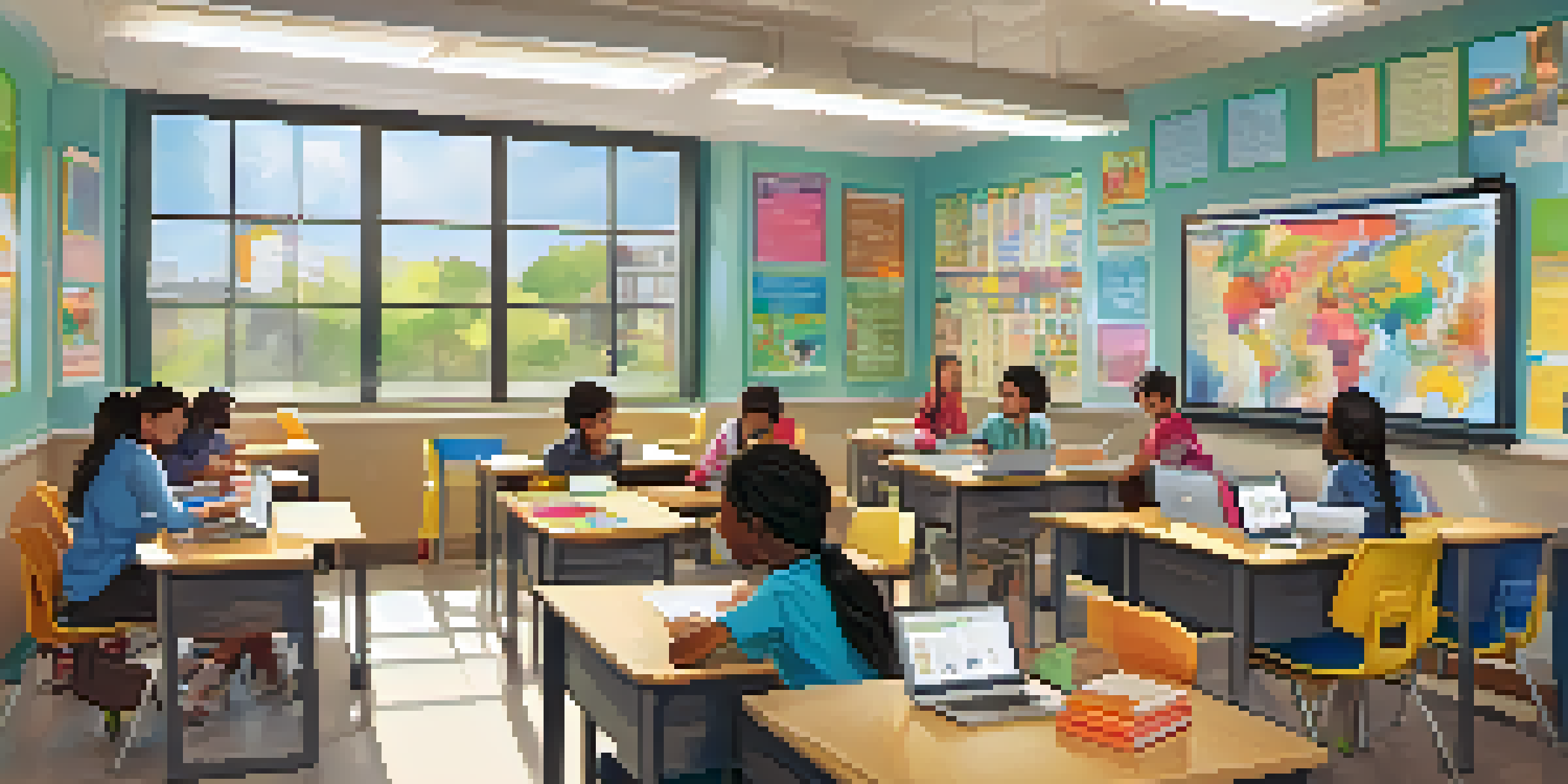Blended Learning and Global Citizenship Education: A Study

Understanding Blended Learning in Education
Blended learning combines traditional classroom experiences with online activities, creating a more dynamic learning environment. This approach allows educators to leverage technology while maintaining personal interaction, which can enhance student engagement. For instance, students might attend lectures in person but complete assignments and discussions online, blending the best of both worlds. Ultimately, this method caters to diverse learning styles, making education more accessible and effective.
Defining Global Citizenship Education
Global Citizenship Education (GCE) aims to equip learners with the knowledge, skills, and values necessary to navigate an increasingly interconnected world. It emphasizes critical thinking, empathy, and a sense of responsibility towards others, regardless of geographical boundaries. For example, GCE might involve students exploring global issues like climate change or social justice, encouraging them to become active participants in their communities. By fostering these skills, GCE prepares students to contribute positively to society.
Blended Learning Enhances Engagement
By combining in-person and online activities, blended learning fosters greater student engagement through personalized experiences.
The Intersection of Blended Learning and GCE
Blended learning creates a unique platform for implementing Global Citizenship Education by incorporating diverse perspectives through digital resources. Students can engage with global issues through interactive online content, such as webinars and forums, while still benefiting from in-person discussions. This dual approach not only enriches their understanding but also fosters collaboration with peers worldwide. As a result, learners become more informed and prepared to tackle global challenges.
Benefits of Blended Learning for GCE
One of the key benefits of blended learning in GCE is the flexibility it offers, allowing students to learn at their own pace and explore topics of personal interest. This self-directed approach can lead to deeper engagement with global issues, as students seek out additional resources and connect with experts online. Furthermore, blended learning encourages the development of digital literacy skills, essential for navigating the modern world. Ultimately, these benefits support a more holistic education experience.
Global Citizenship Education (GCE) Skills
Global Citizenship Education equips students with critical thinking and empathy, preparing them to address global challenges.
Challenges of Integrating Blended Learning in GCE
Despite its advantages, integrating blended learning into Global Citizenship Education can pose challenges. Not all students have equal access to technology, which can create disparities in learning opportunities. Additionally, educators may require training to effectively utilize digital tools and platforms, ensuring that they complement traditional teaching methods. Addressing these challenges is crucial to ensure that all students can benefit from a blended approach to GCE.
Case Studies: Successful Blended Learning in GCE
Several educational institutions have successfully implemented blended learning strategies in their Global Citizenship Education programs. For instance, a school might pair online global forums with local community service projects, allowing students to apply their learning in real-world contexts. These case studies demonstrate the potential for blended learning to enhance GCE, fostering a deeper understanding of global issues. By sharing these success stories, educators can inspire others to adopt similar approaches.
Future Trends in Learning Technologies
The integration of AI and virtual reality in education may transform how students engage with global issues and cultures.
Future Trends in Blended Learning and GCE
Looking ahead, the integration of artificial intelligence and virtual reality in blended learning could revolutionize Global Citizenship Education. These technologies can provide immersive experiences, allowing students to explore global cultures and issues in unprecedented ways. Furthermore, as online learning continues to evolve, educators will likely discover innovative methods to engage students and promote global awareness. Embracing these trends will be essential in preparing future generations for a connected world.
Conclusion: The Path Forward for GCE and Blended Learning
In conclusion, blended learning holds significant promise for enhancing Global Citizenship Education. By combining traditional and digital learning methods, educators can create a more engaging and impactful experience for students. As we navigate the challenges and opportunities of this approach, it's essential to prioritize equity and access to technology. Ultimately, fostering global citizens through blended learning can help build a more compassionate and informed society.